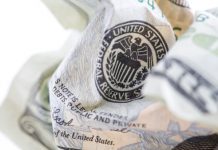Markets
FOMC Minutes of the July meeting might have convinced the final doubters that the US central bank soon will give the all clear to start tapering asset purchases “in coming months”. The majority of Fed members is convinced that sufficient progress has been made towards reaching the symmetric 2% inflation target, but wanted slightly more proof on the health of the labour market. July payrolls (nearly +1 million) already worked their magic with a solid August report probably being sufficient to announce a tapering framework at the September FOMC meeting. The effective dialing back of purchases can than commence in Q4 as a quid pro quo for the doves inside the Fed. While the effective start date and the exact pace of reducing the current $80bn/month US Treasury and $40bn/month MBS purchases remains topic of debate, Fed members did reach a consensus on dialing back both programmes proportionally in order for them to end simultaneously. We could be looking at a mid-2022 end date on the back of comments by individual Fed governors hinting at a faster tapering than the 10 months during the previous cycle because of a stronger economy/labour market and hotter inflation compared to back then. Additionally, the Fed currently has to deal with supply rather than with demand problems. Such tapering scenario paves the way for a rate lift-off by the end of 2022.
The release of the Minutes triggered some volatility in the US Treasury and FX market, but no directional move. The one market that did show a significant reaction was the US stock market. Different positioning is a likely reason. Main indices fainted in the final trading hour to lose around 1% in the close. Risk aversion spills into Asian dealings overnight Korea and Taiwan underperforming (> -2%). The dollar is flexing its muscle, forcing technical breaks. EUR/USD drops below 1.1704/1.1695 support to change hands near 1.1680, the lowest level since November last year. Intermediate support stands at 1.1612/03 (Sep/Nov 2020 low) ahead of the next key technical level of 1.1495/93 (March 2020 high/50% retracement 2020 EUR/USD rally). The trade-weighted greenback (DXY) forced its way above the 93.19 July top to currently test the YTD high at 93.44. Moving north of this level will accelerate EUR/USD selling. Even the Japanese yen can’t keep up with the dollar this morning despite the risk-off climate. USD/JPY paves its way back above 110. Core bonds for now can’t choose sides between the upcoming tapering and risk aversion. We think the risk climate will play first fiddle, suggesting a positive short term bias for bonds. Today’s eco calendar contains US weekly jobless claims and Philly Fed Business Outlook. We don’t expect them to impact trading with risk sentiment the key driver.
News headlines
Australian employment unexpectedly grew a marginal 2.2k in July. Markets expected a decline of more than 43k. The rise came on the account of part time jobs (+6.4k). The unemployment rate declined further below pre-pandemic levels to 4.6% while consensus saw a minor rise possible. The good news ends here though, since the fall was largely the result of an easing participation rate from 66.2% to 66%. Hours works also fell 0.2%. Additionally, future job reports are likely to feel the impact from more (regional) lockdowns that have been introduced in the course of July and August. The Aussie dollar slips and is currently testing and risks losing the AUD/USD 0.72 big figure. A generally stronger USD in the wake of the Fed policy meeting minutes and Asian risk-off is also playing.
Iron ore slips another 6%+ this morning, bringing the total decline from its 2021 high to more than 35% already. The accelerating selloff comes as China is pushing forward with its pledge to reduce steel production in order to cut carbon emissions. At the same time, demand for iron/steel in the country is waning and expected to soften further amid efforts by authorities to reduce leverage, tightening property policy and a general slowdown of economic momentum.














